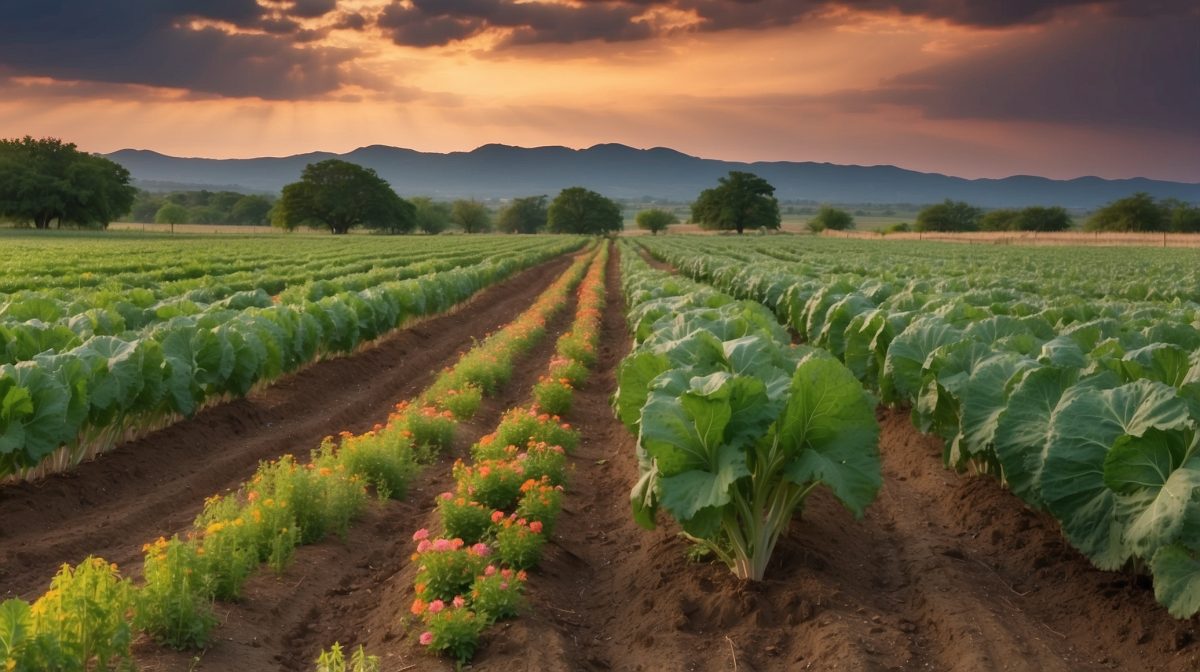Whether you’re a seasoned gardener or just gettin’ started, knowing when to plant your vegetables is key to a bountiful harvest. It ain’t just about puttin’ seeds in the ground; it’s about timin’ and tendin’ to ’em with care. So, let’s saddle up and ride through the ins and outs of plantin’ vegetables in the Texas Hill Country.
Understanding Texas Hill Country Seasons
Now, to get a good grasp on gardenin’, we gotta talk about the weather around these parts. Texas Hill Country sees a bit of everything – from dry, hot summers to the occasional chilly winter. These patterns ain’t just small talk; they’re the blueprint for your gardenin’ success. The way the sun scorches in July or how the bluebonnets bloom in spring, it all plays a part in how your veggies will grow.
And let’s not forget about the soil and terrain – we’re talkin’ about limestone bedrock and clay soils that can be as stubborn as a mule. But with a little know-how and elbow grease, you can work with the land to create a garden that’s as lush as the green hills themselves. It’s all about playin’ to the strengths of our environment and understandin’ what it means for your tomatoes, peppers, and okra.
Determining the Last Frost Date
When it comes to gardenin’, frost dates are as important as a good pair of boots. The last frost date is like a green light for plantin’ most of your veggies without worryin’ about a cold snap turnin’ ’em to popsicles. It’s that special day when the risk of frost is about as low as a rattlesnake in a prairie dog hole.
Findin’ your local last frost date is easier than findin’ a cold drink on a hot day – just check with your local extension office or use an online tool. But remember, these dates are more of a guideline than gospel. Keep an eye on the weather, and be ready to cover your plants if a late frost threatens to crash the party.
Spring Planting Guide
Early spring in the Texas Hill Country is as refreshing as a breeze through the live oaks. It’s the perfect time to plant cool-weather veggies like kale, carrots, and beets. These little guys can handle a chill and will get your garden goin’ strong. As the season warms up, you’ll want to wait just a hair past the last frost date before sowing the likes of beans and corn.
By late spring, the sun starts to mean business, and it’s time to think about heat-lovers like squash and cucumbers. These plants will soak up the warmth and turn it into the tastiest produce this side of the Brazos. Just be sure to keep an eye on the temperature, ’cause a late spring frost can still sneak up like a coyote in the night.
Summer Planting and Gardening
Summer in Texas Hill Country can be as hot as a two-dollar pistol, but that don’t mean your garden’s gotta suffer. There are plenty of heat-tolerant veggies, like okra and peppers, that’ll thrive in the sizzle. These plants are like the cowboys of the garden – tough and resilient.
To keep your garden from wilting under the Texas sun, you’ll need to employ some savvy strategies. Waterin’ deep and early in the mornin’ helps, and a good layer of mulch will keep the moisture in like a canteen keeps water cool. Sometimes, you might even need to give your plants a little shade during the peak heat – it’s like puttin’ a hat on to shield ’em from the midday sun.
Fall and Winter Planting
As the heat eases off and the days get shorter, fall plantin’ comes into its own. This is the time for crops like spinach and collards, which appreciate the cooler temperatures. Plus, there’s somethin’ downright satisfying about harvestin’ fresh veggies when the leaves are changin’ colors.
Winter ain’t idle time for a Texas Hill Country gardener, neither. With a bit of preparation, you can plant overwintering veggies like garlic and onions that’ll be ready come spring. And don’t forget about protectin’ your garden from the cold – a layer of mulch can do wonders, and on those rare frosty nights, coverin’ your plants will keep ’em snug as a bug in a rug.
Conclusion
Well, we’ve covered quite a bit of ground, y’all. Remember, timin’ is everything when it comes to plantin’ vegetables in the Texas Hill Country. Embrace our unique growin’ conditions, and you’ll be rewarded with a harvest that’s as rich as our Texas heritage.
So go on, get out there and plant with pride. There’s nothin’ quite like the taste of vegetables you’ve grown yourself, especially when they’re nurtured in the good ol’ Texas Hill Country soil. Happy gardenin’, folks!
FAQs
What’s the most important thing to consider when planting vegetables in the Texas Hill Country?
Paying attention to the local frost dates and weather patterns is crucial. You gotta know when it’s safe to put those tender plants in the ground without Jack Frost nipping at their roots.
Can you plant vegetables year-round in the Texas Hill Country?
Well, sure thing. With a bit of planning and choosing the right crops, you can have a productive garden throughout the year, even in our sometimes unpredictable Texas weather.
How do you protect plants from the intense summer heat?
Mulching, providing adequate water, and sometimes shading your plants are all good strategies to beat the heat and keep your veggies from wilting in the Texas sun.
What are some of the best vegetables to plant in early spring?
Early spring is perfect for cool-weather crops like lettuce, spinach, peas, and radishes. Them plants don’t mind a little nip in the air and will give you a head start on the growing season.
When should you start preparing the soil for spring planting?
I’d recommend getting your soil ready a few weeks before your intended planting date. This gives you time to add compost, check pH levels, and ensure the ground is workable for those precious seeds or seedlings.


